Graubünden in the 30 Years War
Graubünden - not a member of the Confederation but an associate - suffered badly during the 30 Years War, partly because of its geographical position, and partly because of its administrative structure and religious composition.
All the warring parties coveted its strategically vital Alpine passes, which were the only available route between Austria and Spanish-ruled northern Italy - both of them Habsburg territories. Control of the passes determined whether or not the Empire could move troops from one field of war to another.
Graubünden at the time was not a centralised entity but a federation of three regions, the Leagues, whose loose political structure made it vulnerable to outside powers.
In addition, it was split along religious lines. In particular the subject territory of the Valtellina (Veltlin) on its southern borders, was largely Catholic and resented the dominance of the Protestants. In the "Holy Bloodbath" of 1620, the Valtellina Catholics, backed by Spanish troops from Milan, massacred large numbers of their Protestant neighbours.
This event sparked intervention from the great powers, and the area changed hands several times. The best known local leader was Jörg Jenatsch (1596-1639), a Protestant pastor. He allied himself to the French, whose forces under the Duc de Rohan drove the Austrians from the Valtellina. But finding that France intended to keep control of the area, Jenatsch converted to Catholicism and allied himself with the Habsburgs. He was assassinated in 1639, but his aim of preserving the Valtellina for Graubünden was achieved.
Graubünden Geschichte Seiner Kreise
120 years ago, on 1st April 1851, the 39 districts replaced the
old jurisdictions and were recognised by law as autonomous
self-administrating bodies. As conditions have changed
fundamentally in recent times this organisation will have to be
reconsidered.
In looking for a suitable solution present-day
requirements will have to be taken into account, but combined
with an understanding for that which has developed in the
course of History.
May this short history of our districts, written by Dr.
Leo Schmid and excellently arranged by the publishers, help to
further such and understanding.
Chur, 12th June 1971
Georg Vieli
President of the Cantonal Government
Preface
The many-coloured mosiac on the map of the Grisons with
its 39 districts reflects the centuries-old, often changing and
rich history of the Swiss canton. It was in 1851 that today's
districts replaced the earlier, to a large extent autonomous
municipalities which had their own jurisdiction and constituted
the true democratic cells of the "Freestate of the three
Leagues". In the sense of a continuous historical evolution,
the districts of the Grisons today still preserve part of their
old autonomy in jurisdictional matters, assuming, as they do,
certain functions in the application of criminal law mostly,
but also of civil law, and accomplishing a number of
administrative tasks. District elections - most important
those of the district judges and the deputies of the cantonal
parliament, the Great Council - are held every two years, often
still in the old form of the Landsgemeinde (" Bsatzig" or "
Mastralia" as it is called in the local languages), whereat the
citizens gather under the open sky to debate and to cast their
ballots - a rare and elevating demonstration of direct
democracy.
Outside the Grisons, the district system which is
unknown in the other cantons, may seem strange and anachronic.
As a fact, of late years even in the Grisons itself there is
some criticism to be heard here and there, since the modern
tendency goes toward centralization and rationalisation. But
those who consider the historical evolution, cannot
underestimate the significance of these districts. In this
sense, the History of the districts of the Grisons by Dr. Leo
Schmid may contribute to a better understanding.
Dr. Duri VITAL
Chairman of the Association of the Grisons District
Presidents.
Introduction
The present history of the 39 districts of the Grisons,
the successors of the old jurisdictions, outlines their
historic development up to 1851 in a simple and short survey.
The spelling of the district names is that of the
official state calendar of the Grisons. The explanations of
the names was taken from the second volume of the Rhaetian Book
of Names by Andrea Schorta (Berne 1964). The descriptions of
the coats of arms are based on "The Coats of Arms of the
Districts and Communes of the Grisons" (Chur 1953).
I should like to thank Dr. Ruolf Jenny, Keeper of the
State Archives, for his valuable advice on many articles. I
would also like to express my thanks to Mr. Christian Zindel,
Archeologist of the Grisons, for his help in questions on
pre-history. Several of my colleagues have contributed to
solve problems regarding local history, for which I am most
grateful.
Chur, May 1971 Leo Schmid
From Independent Jurisdiction to Cantonal District
A Historical Survey
The mountainous country of Rhaetia, which was settled in prehistoric
times, was occupied by the Romans shortly before the year 1 A.D. and
because of its passes served the Roman Empire as a link between the
military positions on the Rhine and Danube and Italy, proof of which
can be found in Roman route maps. With the decline of the Roman
Empire, at the time of the Great Migration, Rhaetia soon came under
the influence of the Franks. The Emperor Charlemagne, who united the
countries remaining after the Great Migration to form one European
Empire, also included Rhaetia in his empire. The reason for this was
that Rhaetia with its passes was the key to Lombardy, which was also
a part of Charlemagne's territory.
Out of this territory, which covered a large part of the present-day
Grisons, Charlemagne created a royal Duchy, called Upper Rhaetia,
governed by a Duke. The Duke was given the feudal tenure of the
royal estates and possessed royal rights for hunting, fishing, mining
and collecting tolls. When eventually Charlemagne's empire was
divided amongst his successors, Rhactia was part of the territory
which became later known as the German Empire.
Charlemagne's successors were however weak and incompetent kings, who
were unable to enforce their sovereignty. As a result the Duke who
ruled Rhaetia was left without royal support and the representatives
of the Church -the Bishop of Chur and the Abbot of Disentis -as well
as former royal officials, were able to avail themselves of an
increasing number of imperial rights. When, eventually, competent
rulers came to the throne of the German Empire the powers in Raetia
had entrenched themselves so securely that the German Emperors had to
court the favour of the Rhaetian lords in order to ensure the way
between the German and Italian parts of the empire across the easily-
accessible passes of the Grisons. For this reason the Emperor Otto,
and later Barbarossa, both of whom then used the Grisons passes on
their way to Italy, made generous gifts, including land, to the
Bishop of Chur and the Abbot of Disentis who, thanks to their loyalty
to the Emperor, became princes of the empire. They received not only
land, but also former royal rights such as market rights, rights of
way, toll rights, and mining, hunting and fishing rights. But most
important was the right of jurisdiction. Thus, as possessors of
these sovereign rights they became the actual lords of the land, with
their own private territory, formally a feudal tenure of the king,
but in actual fact their own property. As stated, the Bishop and
Abbot were not the only lords, there were also temporal lords who,
after the fall of the old Caroline Duchy, had been able to possess
themselves of former royal estates and their accompanying rights,
such as hunting rights and the right to collect levies etc. They
formed small centres of power and as a result, the spiritual lords-
Bishop and Abbot-and the feudal temporal lords, divided the land of
Rhactia between them.
Who were the inhabitants of these spiritual and temporal
sovereignties? Some of them were serfs, farmers who were bound to
the land, but some were yeoman farmers who owned the land. The
yeomen formed their own free communities, which were not subjected to
the jurisdiction of the feudal lords, but had their own freely-
elected magistrate. ln the 13th century the free German-speaking
Walsers joined these established Romansh yeomen, for example in
Schams and in Laax. The Walsers, who had settled along the important
passes and in the high-lying valleys, were given a high degree of
personal and political freedom by the lords of Rhaetia. They were
given the right to elect their own magistrate, who administered the
community and who held the common court. These free communities were
in a much better position economically than the lords themselves
because of the introduction of a law which laid down that the land
must be leased and also inherited at a fixed rate. The export of
cattle to northern Italy, and above all traffic across the passes,
enabled them to become economically independent.
Thus, in the 14th century, there were on the one hand feudal
sovereignties in Rhactia ruled by noble lords who were in a weak
economic position, and on the other hand there were also prosperous
free communities organised cooperatively and which were an example to
the subjects of the lords.
The lords had only themselves to blame for their defeat in the
quarrel which subsequently broke out. For the most part they had
gained their property by means of fights or feuds and had been forced
to defend their property against equally agressive neighbours. A
typical example is the Werdenberg-Belmont feud in 1352, which badly
affected the Gruob. The subjects were the victims of this policy,
and they suffered greatly as a result of the confusion and
lawlessness common to such times of feud. The lords had no
mercenaries, and thus, in times of war, they were dependent on the
farmers; at the same time their income was derived from the taxes
they levied on the farmers, who could only farm their land in times
of peace. The numerous feuds during the 14th century were therefore
of no advantage to either lords or subjects. From the 14th century
onwards the desire to secure peace grew, and this led to the birth of
the three Rhaetian Leagues, which were at first founded independently,
without co-ordination.
The first was the League of God's House. In 1367 the subjects of the
Bishop of Chur at Chur itself, also in Domleschg, Oberhalbstein,
Engadine, Münstertal, Puschlav and Bergell rallied against the Bishop,
who had sold various sovereign rights to Austria. This emergency
led to the forming of the League, which took many feudal rights from
the Bishop and placed them in the hands of the common people.
In the League of God's House it was the subjects who rose against
their lords, but in the Grey League-founded at Ilanz in 1395 and
renewed and enlarged at Truns in 1424-it was the lords and the
subjects who joined forces. The Abbot of Disentis, the Baron of
Rhädzüns, and the lords of Sax-Misox, each with his subjects who
possessed even then a certain degree of independence, made a treaty.
In this treaty they resolved to put an end to feuds, to protect their
property and roads, to grant each other military aid, and to bring
their disputes before a court of arbitration.
The Grey League covered the whole of the Vorderrhein Valley as far as
Ems and the greater part of the Hinterrhein Valley, as well as Misox
and Calanca.
The League of Ten jurisdictions founded in 1436 was a union of the
subjects of Friederich VII of Toggenburg in Herrschaft, Prätigau,
Schanfigg, Davos, Churwalden and Belfort. They wanted to prevent
their being divided between several lords after the death of the last
Duke of Toggenburg.
As shown by Prof. Dr. Peter Liver in his research into the history
of the Laws and Constitution of the Grisons, the foundation of the
aforementioned Leagues is the climax of the disputes between the
feudal lords and their subjects, who gained increasing influence in
affairs of state, and who finally freed themselves from the supremacy
of their lords, either by purchase or by force of arms. The Articles
of Ilanz of 1524 and 1526 are the result of this movement for freedom.
These Articles provided for the election of the authorities by the
jurisdictions, which were also given the right to collect levies, and
given the hunting, fishing and mining rights. In some cases this
process of liberation continued until the 18th century, but it can be
said that as early as 1500 the political power was already in the
hands of the people, as shown in the Charter of 23rd September 1524
laying down the constitution of the " Free State of the Three
Leagues".
The Organisation of the Free State and the Function of the
Jurisdictions .
In accordance with the aforementioned constitution, the Free State of
the Three Leagues was made up of jurisdictions. These jurisdictions
comprised a number of villages, communities known as neighbourhoods
(Romansh vischnaunca from Latin vicinus = neighbouring), which were
usually geographical units (valley, side of valley, upper or lower
valley). The neighbourhoods were only local economic units, i.e.
operating only on this level without political rights, whereas the
jurisdictions had absolute political power of administration,
legislation and jurisdiction, and were thus sovereign powers.
In external politics, above all in the administration of subject
territories, the transit of foreign troops, the right to make
treaties, etc., the competent authority was the Free State of the
Three Leagues. Even here the jurisdictions were of great importance,
because the sovereign power was not, as is the case today, held by
the people, but by the jurisdictions. Every decision in foreign
politics was made by the Assembly (Bundestag) which was the highest
authority in the state. This Assembly was made up of the
representatives of the jurisdictions, the representatives having two
votes in the case of larger communes, one in the case of smaller
communes. There was a total of 63 community votes in the Assembly.
The representatives could not, however, vote as they wished, as is
the case today; they were required to vote at the Assembly according
to the dictates of their jurisdictions. They were bound to the
instructions they had received. In this way every decision made by
the Assembly was subject to the referendum of the communes, which was
also combined with a certain right of initiative. The communes did
not have to give a clear "for" or "against" to the questions put to
them-they were able to modify their opinions and make suggestions
freely.
Here is an example: The Republic of Venice proposes a pact to the
Three Leagues. The leaders of the Three Leagues-Land judge of the
Grey League, President of the League of God's House, and Magistrate
of the League of Ten Jurisdictions give the representatives in the
Assembly a copy of the proposals. At the next Assembly the results
are as follows: 20 communes for, 18 against, 15 no reply because
representatives are not sent, 10 communes accept, but with objections
or other suggestions. lt was often quite difficult to find out from
the various opinions what the communes really wanted. One thing,
however, was quite clear: the political power in the Free State, in
internal as well as external politics, was definitely not in the
hands of the Leagues, but in the hands of the jurisdictions. The
jurisdiction of old Rhactia was practically a sovereign state and
actually had more independence in relation to the State of the Three
Leagues than the cantons of today have with the Confederation. From
a historical point of view this is why the autonomy of the commune
today is regarded as being of great importance, and is reaffirmed
again and again during the pre-election canvassing in the canton.
There was not a proper government with the powers to make decisions.
Current matters were dealt with by the leaders of the Three Leagues
mentioned, often assisted by 3 to 5 representatives from the Three
Leagues. The frequently mentioned High Courts were, according to
Liver, only administrative districts, without competence or powers of
state. They only served as a basis for calculating the distribution
of offices in the Valtellina, the distribution of the revenues of the
whole state, and for the number of troops to be raised.
To summarise: The Free State of the Three Leagues was a federated
state of jurisdictions possessing a high degree of independence.
Each of these jurisdictions was an immediate democracy. Decisions
made by the federal state were subject to the referendum of the
communes. This kind of State was the result of the varied
geographical, ethnological, linguistic, religious, and historical
features of the country. (Liver).
The Development from Jurisdiction to District
The Organisation created by the charter of 1524 was forced to give
way to a centralised form of Organisation during the French
Revolution. Napoleon's Act of Mediation restored the old situation
but the right of legislation was taken away from the jurisdictions
and transferred to the Great Council, which consisted of 63
representatives of the communes as in the old legislature. The
referendum of the communes was kept. It was not until the new
federalconstitution of 1848 that changes were made.
But only after three unsuccessful attempts did the communes accept
the new constitution in 1853. The constitution of 1854 turned the
Grisons from a federal state composed of communes having the
democratic right of the referendum into a canton organised as a
unitarian state in which the people became the sovereign power
instead of the total of all the communes. The Great Council
therefore no longer consisted of representatives of the communes who
had to vote according to instructions, but of representatives of the
people who cast their votes to the best of their knowledge.
What had happened to the jurisdictions? The bill of 1851 on the
division of the canton into regions, districts and communes, and
especially the constitution of 1854 mentioned above, turned one or
more of the old jurisdictions into the present-day districts. The
neighbourhoods and villages, which formerly had functioned mainly on
an economic basis, now became political communes. The functions and
rights of the old sovereign jurisdictions fell partly to the canton,
partly to the sovereign communes which had arisen from the
neighbourhoods. Thus more than 200 very small villages were given
the status of autonomous communes. The 39 districts legally became
bodies of autonomous administration; compared with the communes and
the canton, however, they only had restricted competence of
administration. Above all they were jurisdictions, courts of
bankruptcy, courts for the protection of wards, and electoral
districts for the election of the Great Council.
The territory of these districts is the same as that of one or more
former jurisdictions, e.g., the jurisdictions of Maienfeld and Malans
with the four villages of Maienfeld, Flasch, Jenins, and Malans
became the district of Maienfeld; the four villages became communes.
Some changes were made partly for reasons of confession. Thus the
village of Felsberg was part of the jurisdiction of Räzüns; today,
however, it does not belong to the district of Räzüns with Räzüns,
Bonaduz and Ems, but to the district of Trins with Trins, Tamins, and
Flims. The case of Wiesen is similar; up to 1851 it belonged to the
jurisdiction of Belfort, but was then joined to the district of
Bergün.
Within Switzerland the Grisons have a very special position. This is
due to the canton's unique history and tradition. Most of the other
cantons are divided only into regions and communes. The regions
usually have no rights of legislation or taxation. The Grisons
however are subdivided into regions, communes, and districts.
Whereas the regions are only courts of civil law, created in 1851
rather artificially and not based on tradition, the cantonal
constitution, in paragraph 38, recognises the districts as autonomous
bodies with the right of legislation and taxation. It is obvious
that it is the districts which are today carrying on the principles
of the structure of the old free states of the Grisons. The former
neighbourhoods, which after 1851 gradually reached the position of
independent communes, managed to retain a high degree of the autonomy
that they enjoyed under the old system of jurisdictions, especially
when compared with the average Swiss commune. It remains to be seen
whether this autonomy can be maintained and justified in the future.
THE DISTRICTS OF THE GRISONS
(The districts are listed under the three leagues to which they
belonged according to the order found in the old division of the
country. The district in which the former capital of the league was
situated is placed first in each list.)
The Grey League
Ilanz
Disentis
Lugnez
Ruis
Rhäzüns
Trins
Rheinwald
Schams
Thusis
Safien
Misox, Roveredo and Calanca
The League of God's House
Chur
Bergell
Domleschg
Oberhalbstein
Alvaschein
Bergün
Oberengadin
Obtasna, Untertasna, and Remüs
Avers
Poschiavo and Brusio
Fünf Dörfer
Münstertal
The League of the Ten Jurisdictions
Davos
Klosters
Küblis
Jenaz and Luzein
Schiers and Seewis
Maienfeld
Belfort
Churwalden
Schanfigg
![[ Graubuenden Map ]](http://www.mindspring.com/%7Ephilipp/gemeindc.gif)
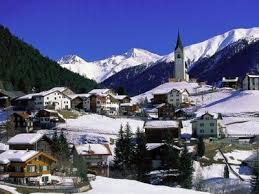

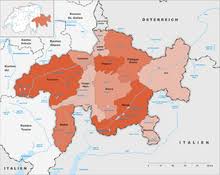
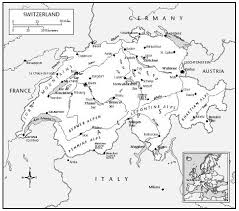




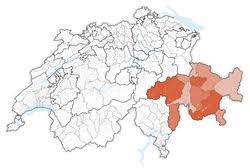



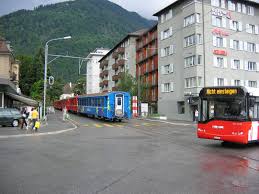
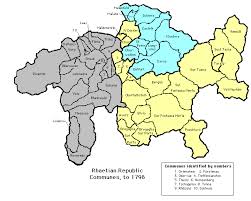
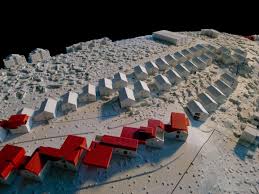

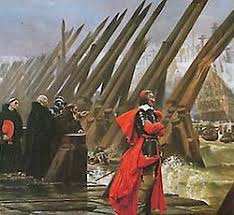
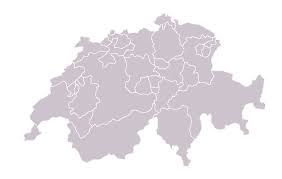
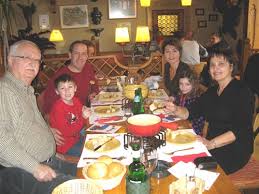

No hay comentarios:
Publicar un comentario
yesyukan